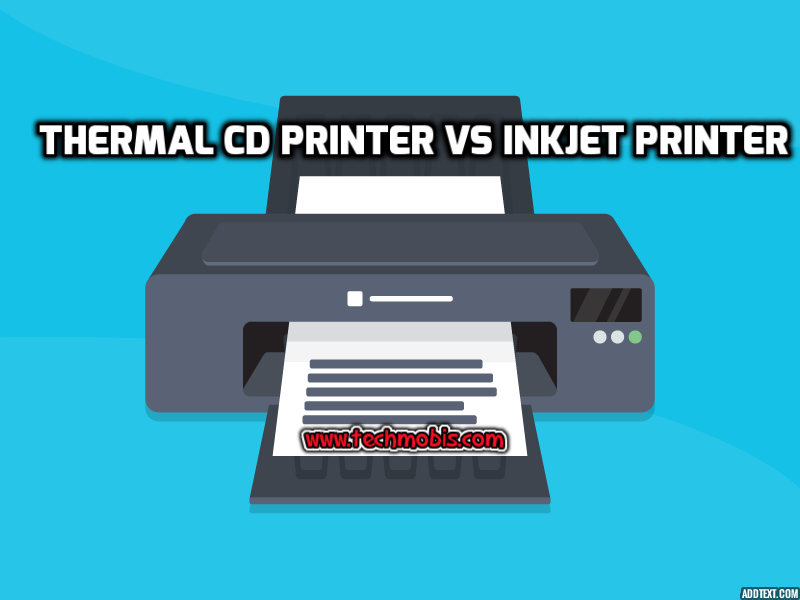
Today, we can find a printing solution for any type of application. There is a whole variety of printing machines for commercial and casual use. We can print images, inscriptions, and texts of any complexity not only in a myriad of colors but also featuring different contours. Modern printers allow transferring images to any size of paper, be it a standard sheet, an envelope, postcard, leaflet, poster, or book cover. We can easily print glossy or matte photos, print on fabrics and textured paper or print on cds and dvds. There are even 3D printers creating three dimensional solid objects. Something that seemed impossible several years ago might be a common thing now.
Different types of printers use different technologies and vary in designs, some of them being suitable for a single intended use while others offer a whole range of functions packed in one unit. Printers that print on cds and dvds fall into two types using either either inkjet or thermal printing. Hence, to know which type will work best for your needs, first, it’s necessary to have a closer look at printing technologies applied that might greatly impact your choice at the end.
Contents
Printing Technology Insight
It’s worth saying that thermal and inkjet cd printers operate in completely different ways. Using different methods of transferring ink onto disc surfaces, they can print only on special printable cd and dvd discs.
As the name suggests, inkjet printers spray ink onto the surface. Using a nozzle-based device, they apply tiny droplets onto an inkjet printable disc. Those droplets create tiny dots smaller than a hair diameter that all-together combine to make up a sharp image. Such technology allows combining a variety of basic dye colors to achieve the whole color spectrum.
In contrast to inkjet printers, thermal machines do not spray ink but use heat and pressure to transfer pigments onto a surface. Normally, a thermal printer transfers image to a thermal printable disc by means of heat transfer ribbons that come in single, dual or multiple colors to achieve a full-color output.
Let’s Explore the Basic Differences
The difference in printing methods and technologies applied defines the basic differences between inkjet and thermal cd/dvd printers, both having its advantages and drawbacks.
Inkjet CD/DVD Printers
Pros
- Inkjet cd/dvd printers are usually more cost-effective than their thermal counterparts. And it refers not only to printing units available at considerably lower prices but also to cartridges, supplies, and maintenance costs.
- Inkjet printers really excel in terms of image quality. Unlike thermal models, they re distinguished by a higher DPI rate and can deliver up to 4800 DPI to achieve an extremely high image quality. Printer DPI settings are usually adjustable which means you can print literally anything on the disc, from an ordinary text image to a photo. Even simple inkjet cd printers can produce truly high-resolution prints, not to say about the latest high-end models.
- Inkjet printers also stand out for more precise and accurate color and tone reproduction, thanks to a wider variety of dye colors applied and more flexible color settings.
Cons
- Using a system with a variety of moving parts, inkjet printers are more prone to some failures or malfunctions and might require maintenance or parts replacement more often.
- Ink-based prints are less durable and more susceptible to external impacts. The image can smudge or smear when exposed to moisture, heat, light or simply as a result of long-term routine use. To improve the print durability, it’s possible to apply a lacquer coating. Yet, it will increase the final printing and disc cost.
Thermal CD/DVD Printers
Pros
- The biggest advantage of thermal cd printers is the unsurpassed print durability. Though, unlike inkjet machines, they provide somewhat lower image resolution (300 x 600 DPI), the image will last longer, can easily withstand dampness, heat or light exposure and is even scratch-resistant.
- Thermal cd printers boast more reliable and consistent operation. Featuring less moving parts, they are much easier to maintain and tend to last longer.
Cons
- As compared to inkjet printers, thermal models will require more considerable investment. Besides, thermal ribbons are more expensive than ink cartridges.
- Thermal cd printers print a limited color range and do not allow for the precise color reproduction of inkjet models.
Decision Making Tips
Summing up the above-said, we can provide several useful tips and recommendations that will help you make the final choice.
- In terms of budget, inkjet printers look more beneficial since they cost less. Yet, in the long run, thermal models will better pay off the initial investment. They need less maintenance and repair and offer higher print output (500-800 discs per ribbon against 200 to 400 discs per cartridge).
- Inkjet printers are better suited for the projects where you need to print detailed multi-color images, color gradients or photos.
- Delivering permanent crisp images with sharp color edges, thermal printers are great for simple projects that do not need complicated graphics, fancy color patterns, or high-resolution images. Besides, thanks to highly durable image quality, thermal models make a better option for printing labels, durable signs, and barcodes.
- Go for an inkjet cd printer if you mostly need it for lower capacity printing projects focused on full-scale quality images while thermal cd printers will come in handy for high-volume projects engaging monochrome texts, simple printed words, logos or line art.







